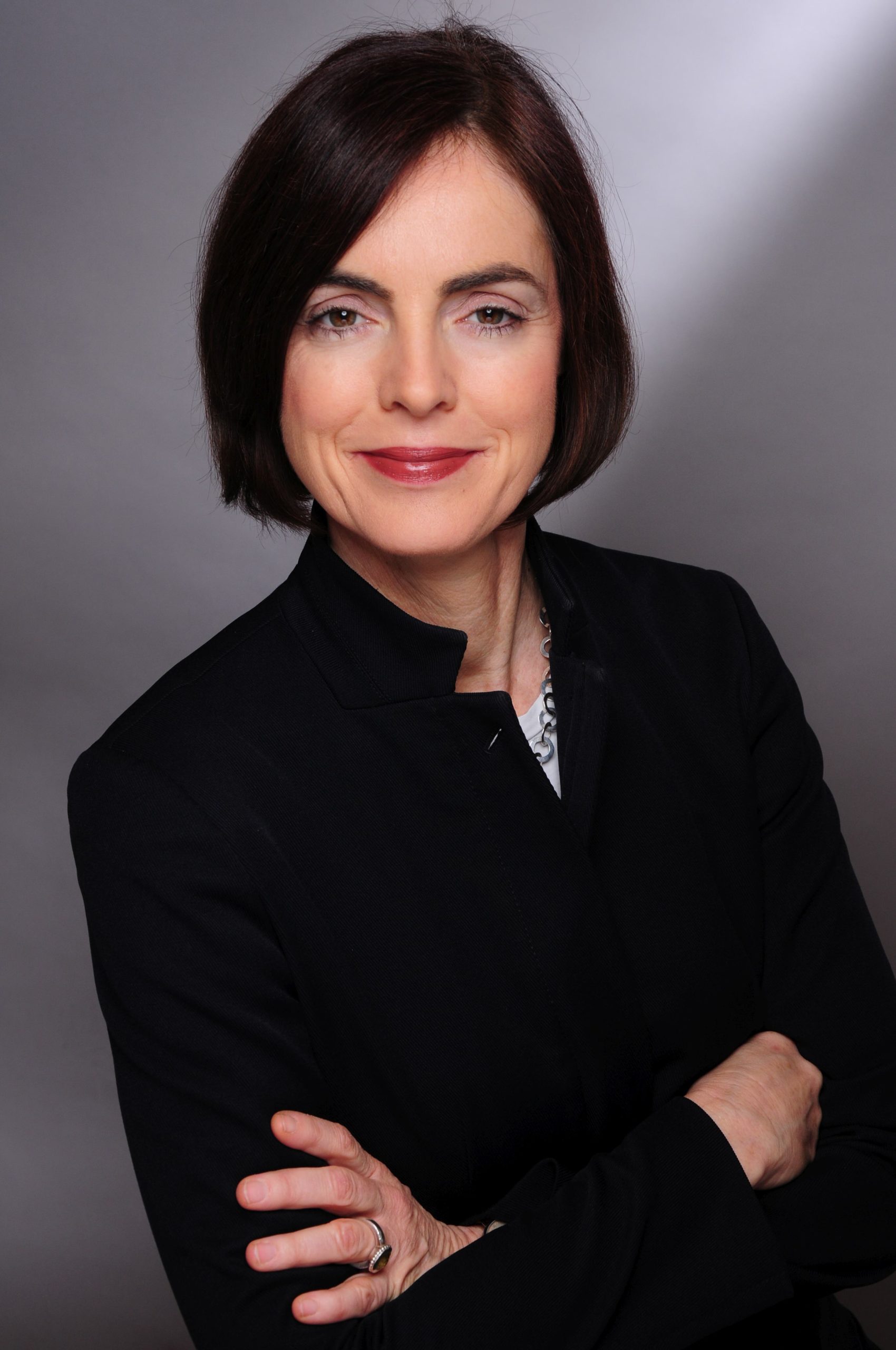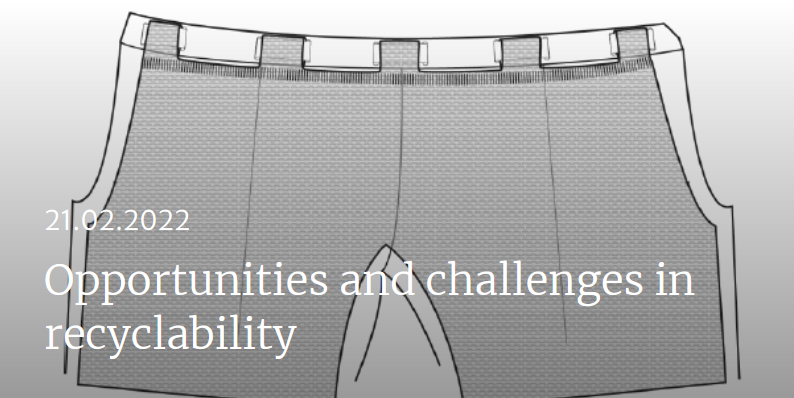Chapter 6
Project on Product Cloning
Interview with Maike Rabe
Designing sustainable and recyclable products?!
A project of the Recycling Working Group showed that this is possible. The goal was to develop more sustainable product upgrades or versions. Nine Partnership companies nominated ten of their products and had them analyzed by the Research Institute for Textiles and Clothing (Forschungsinstitut für Textil und Bekleidung, FTB) of the Niederrhein University of Applied Sciences with regard to their potential for recyclability, durability, grade purity and recyclability.
In this interview, Prof. Dr. Maike Rabe, head of the research institute, shares insights into the project.


Please tell us who you are and what your specific role in the project was?
As a professor of textile finishing and ecology at the Niederrhein University of Applied Sciences and head of the Research Institute for Textiles and Clothing (FTB), I led and conceptually developed the project together with my colleague Ellen Bendt, Professor of Knitting Design and Innovative Product Design. These included the design of the term “product clone” coined by the Textiles Partnership, scientific research on the state of research and technology in the circular economy, the methodology for the development of recyclable products and the consistent pursuit of the project goal. By involving students mainly from our Master’s degree programs in this project, knowledge of the circular economy could also be imparted in an application-oriented manner. The team was supplemented by textile engineer and research assistant at FTB Benita Rau. She contributed her extensive knowledge as an auditor and certifier for sustainability standards to the project and as a project manager, ensured a smooth process and close cooperation with the Textiles Partnership and the corporate partners involved.
What is a product clone anyway? Could you explain this briefly in your own words?
The term product clone has not yet been used in the textile and clothing industry and has therefore been redefined by us. The term “clone” is known from the field of genetic engineering and computer science. In genetic engineering, it is an individual who is genetically identical to another living being, while in computer science it is a replica of a system or software. There is no reference to sustainability. The concept of cloning in the textile and clothing industry was combined with sustainability and circularity in the project and defined as follows:
- A product clone is the replica of an object that consists of secondary raw materials (recycled raw materials) and is itself recyclable.
- The product clone is not a copy, but an improvement of the original, only style and basic function should be preserved as product DNA, the product price should not increase.
- The new selection of raw materials, the manufacturing process, the use phase and the return to secondary raw materials at the end of the product’s life must not lead to a deterioration of the ecological footprint.
What surprised you most about the project? What were the biggest challenges and for which product?
We were surprised first and foremost by the complexity of the topic in the implementation and the difficulty of forming product clusters and thus developing product clones for product categories. Furthermore, it was surprising that very different business models have to be found for articles suitable for circular economy, from re-purpose and re-use to recycling. We were very positively impressed by the willingness of the companies to act and also by the trust they placed in our team. A product clone can only be developed with a very deep understanding of the product and a high level of detailed knowledge for all properties and functions.
The biggest challenge is and remains the lack of maturity of the recycling processes in many places, especially if several passages have to be represented beyond a simple circular passage. The second biggest challenge is the cost of secondary raw materials, logistics concepts and the recycling processes themselves.
How did you perceive the cooperation with the companies that provided their products for the project?
The cooperation with the companies was very positive and appreciative. The one-on-one discussions at the end of the product analysis were very informative and helpful for the subsequent development of recommendations for action. We were very grateful for the open exchange and thus gained an exciting insight into the work and approach of the individual companies on this topic. It became clear that an intensive exchange with the participating companies is an important basis for such a project.
Where do you see the greatest potential? Can the findings also be applied broadly?
During the project, some recurring levers have emerged. In any case, the basic approaches can be applied broadly. Nevertheless, it became very clear that the implementation depends very individually on the product and its respective requirements. The mono-material approach of a sock, in which a great deal can be achieved through process engineering and binding, is, for example, very different from that of hiking trousers, in which the circular economy can be solved by selecting alternative materials or cutting technology.
Great potential certainly lies in so-called design guidelines, which can be individually adapted to a product. A detailed background knowledge of the individual levers is required. Here, the findings from the product clone project can certainly provide initial orientation.
What would be your wish for further project work?
As already mentioned, the course of the project has shown that the exchange with the individual companies and a good information situation are very important for successful project work. In the future, we would like to see work teams in which the companies themselves also actively participate. Experience also shows that longer periods of time must be planned for problem solving.
News
Product-cloning project
At the beginning of February, the Niederrhein University of Applied Sciences presented the results and gave each company individual feedback on their product.

